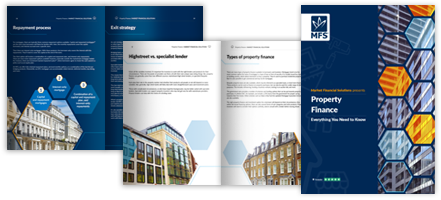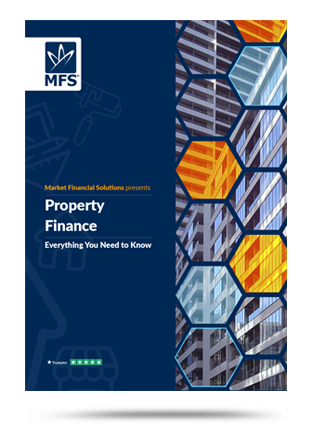Market Financial Solutions are a bridging loan and buy-to-let mortgage provider and are not legal, financial, investment or tax advisers. This document is for informational purposes only and does not, and should not be considered, to constitute legal, financial, investment or tax advice or be relied upon by any person to make a legal, financial, investment or tax decision. Therefore, Investors are encouraged to seek appropriate professional advice. The information in this content is correct at time of writing.

We’re all aware of the housing crisis. There are simply not enough homes out there to satisfy demand. The UK currently has a shortage of 6.5 million homes when compared to similar European countries, according to analysis from the Centre for Policy Studies[1]. Britain has just 446 homes per 1,000 people, the second worst rate in Europe.
The same is true of our rental market. While supply has increased in recent months, there were still 11 enquiries for every rental property in Q2 2025, according to Rightmove[2].
There have been countless debates about whether we can resolve this issue. One solution that’s come to the forefront in recent months is new town developments. Building new towns and cities from scratch could allow us to substantially increase our housing numbers. But, doing so may be easier said than done. In this blog, we will explore the feasibility of this plan, and break down the pros and cons involved.
Where exactly could these new towns be based?
Labour has made housebuilding one of its key priorities, a topic we have covered in depth in another blog. At the recent Labour conference, it was revealed that 12 locations for new town development had been recommended to the government. They are:
- “A standalone settlement in Adlington, Cheshire East
- A corridor of connected development in South Gloucestershire
- An expanded development bringing together Chase Park and Crews Hill in Enfield
- Redevelopment of the former airbase at Heyford Park in Cherwell
- Urban development in Leeds
- Inner-city development and densification in Manchester, Victoria North
- A standalone settlement in Marlcombe, East Devon
- A ‘Renewed Town’ in Milton Keynes
- Densified development in Plymouth
- A new settlement in Tempsford, Central Bedfordshire
- The creation of a riverside settlement in Thamesmead, Greenwich
- Expanded development at Worcestershire Parkway, Wychavon”
Why new towns are being proposed
The argument for building these new towns primarily revolves around the fact that we have a severe housing shortage in the UK, and there is limited scope to build new homes in existing cities. In fact, the Centre for Cities[3] argues that by building new towns near existing cities, it could lead to greater output and economic growth from them.
Also, when new developments are proposed in existing towns and communities, it quite often faces pushback. Those who live in the suburbs or rural areas of the UK are commonly dubbed “nimbys[4]” as they can often resist new homes being built. Although, it is unfair to view this as an issue that only comes from existing homeowners; many MPs have themselves have blocked the building of new homes in their constituencies[5].
Still, if we could find a way to build new towns without any friction, it could lead to some dramatic benefits for the UK economy.

How new towns could help address the housing crisis
Ultimately, if created well, new town developments could substantially help with our housing crisis. Currently, our shortage of housing is limiting labour mobility, worsening public health, disrupting education, and delaying family formation. All of these issues have their own economic consequences.
Over time, we could address each of these issues with well thought out, and well-integrated new towns[6]. There is also the environmental aspect. The UK has some of Europe’s oldest housing stock[7], and the government is keen to get our housing environmental credentials improved. Generally, new build homes are much more environmentally friendly than their existing counterparts[8], and new town developments can be much more sustainable over the long-term[9].
Why delivering new towns is more achievable than ever
Also, while it has been notoriously hard to get anything built in the UK in recent years, we are still in a better position to do so now when compared to the historical precedent. As laid out in Planning, Building, & Construction Today[10], we now have an unprecedented breadth of capabilities to deliver new town developments.
Spatial economic data, environmental assessment, and advanced modelling tools can help identify viable sites, while industrialised and offsite construction methods are maturing. This can lead to speedier, affordable, high-quality housing.
Furthermore, we have plenty of success stories to show that new towns can work when they’re done right. In the post-war years, new towns such as Telford, Milton Keynes, Northampton, and Washington were built across the UK[11]. In the years since, many of these towns have emerged as economic powerhouses, rivalling some of their older counterparts.
New town development challenges
Unfortunately, there are difficulties that come with a new town development – many of which have no easy answers.
The main question remains: are we able to get new town developments built? The government targets 1.5 million new homes in England by 2029, but both the Home Builders Federation and Barratt Redrow have warned that the UK doesn’t have enough builders or construction workers[12].
In fact, the number of builders isn’t just low, it’s declining. Over 1,500 homebuilders stopped trading in the year to September, a decline of 1.7%[13]. This is the first decline recorded in a decade. Issues in the planning system are also adding to the difficulties. Planning permissions for new homes recently fell to the lowest level seen since 2012[14].
Then there are the market concerns. New build homes tend to be costly in comparison to existing homes. The average price of an existing resold property in mid-2025 was £260,607, according to the latest Land Registry data[15]. The average new build price was £350,787.
Also, new builds have a reputation for being low quality. As the pressures has increased on builders to deliver new homes at scale, many have been accused of cutting corners to hit target. Analysis from BuildScan revealed the average property came to the market with 80 defects in 2005. In recent years, this rose to as many as 157[16].
Buyers may be hesitant to purchase expensive homes that are prone to fall apart. Despite this though, the direction of travel here is clear: The government is keen to continue with new town developments and ultimately, the market is in desperate need of more stock. Where and when new towns emerge, there will be clear opportunities for property investors, and we will be at the ready to support them.
The Complete Guide to
Property Finance
Everything you need to know
- Foundation & different finance types
- Useful tools
- Apply them in real life
- Market insights & more
[1] https://cps.org.uk/media/post/2025/uk-housing-gap-stands-6-5-million-homes-finds-cps/
[2] https://www.rightmove.co.uk/news/content/uploads/2025/07/Rental-Trends-Tracker-Q2-2025-FINAL.pdf
[3] https://www.centreforcities.org/blog/why-we-should-be-building-new-towns-in-big-cities/
[4] https://www.telegraph.co.uk/news/2025/08/07/rural-research-group-nimbys-keir-starmer/
[5] https://www.telegraph.co.uk/money/property/house-prices/nimby-housing-secretary-steve-reed-tried-block-development/
[6] https://www.gov.uk/government/publications/building-new-towns-for-the-future/building-new-towns-for-the-future?utm_source=chatgpt.com#the-case-for-new-towns–creating-thriving-communities
[7] https://www.rentokil.co.uk/blog/uk-housing-stock-the-oldest-in-europe/
[8] https://www.hbf.co.uk/research-insight/wattasave/
[9] https://www.rtpi.org.uk/new-from-the-rtpi/futureproof-new-towns-interim-report/
[10] https://www.pbctoday.co.uk/news/planning-construction-news/new-towns-new-communities-new-approach-case-integrated-delivery/150726/
[11] https://redbrickblog.co.uk/2025/06/shaun-davies-mp-new-towns/#:~:text=Telford%20&%20Wrekin%20Council%20builds%20homes,area%20that’s%20holding%20you%20back
[12] https://www.bbc.co.uk/news/articles/c5yg1471rwpo
[13] https://www.mpamag.com/uk/mortgage-types/commercial/labours-housing-pledge-in-danger-as-homebuilders-flee-market/553115?hsmemberId=15908&tu=&utm_campaign=&utm_medium=20251015&_hsenc=p2ANqtz-8McWJGux84-dhZUvSyFVtwBsAj393BH2PQwNCHyiiGdrqz3LKEvDLSug7dJbtNsTgUMFoZCocofi0rStyKZ2enjHvBsg&_hsmi=385282727&utm_content=&utm_source=
[14] https://www.hbf.co.uk/news/planning-permissions-for-new-homes-fall-17-to-lowest-level-since-2012/
[15] https://www.gov.uk/government/statistics/uk-house-price-index-for-july-2025/uk-house-price-index-summary-july-2025
[16] https://www.thisismoney.co.uk/money/mortgageshome/article-10258569/Our-new-build-nightmare-New-homes-average-157-defects.html






